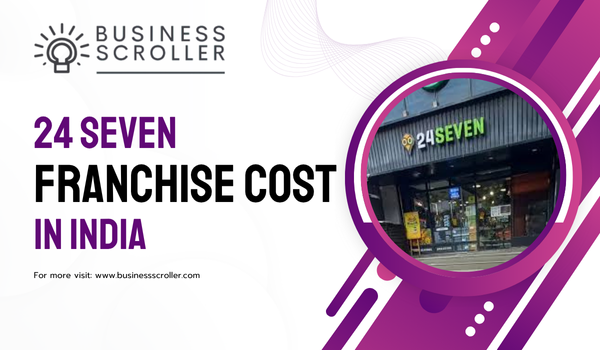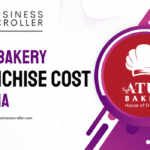If you’re exploring convenience-store or neighbourhood retail franchises in India, 24 Seven (also written 24Seven / 24*7) is one of the better-known 24-hour convenience concepts that has expanded across metro and non-metro markets. In this long-form guide I break down the common franchise models, realistic cost ranges, expected returns, eligibility rules, and a clear step-by-step application path — plus practical tips to help you evaluate if a 24 Seven franchise is the right fit for your city or locality.
Quick reality check: franchise numbers for multi-outlet retail brands vary widely across sources because costs depend on store format, city (metro vs tier-2/tier-3), built-up area, inventory depth and whether the model is FOCO (Franchise-Owned Company-Operated) or pure franchise. Below I show ranges reported by multiple trusted franchise portals and explain why they differ.
Why Consider a 24 Seven franchise?
24 Seven positions itself as a 24-hour convenience destination — groceries, ready-to-eat, telecom recharges, quick essentials and neighbourhood services (bill pay, prints, etc.). The USP is round-the-clock availability and a product mix designed for impulse and emergency purchases. For franchisees this translates into steady footfall during late hours and more predictable basket sizes (even if margins on every SKU are small). Multiple franchise listings show the brand uses both franchise ownership and FOCO arrangements depending on the geography.
Franchise Models you’ll encounter
- Small Convenience Outlet (Franchisee-run) — 300–800 sq.ft; owner manages daily ops.
- Standard Store (Franchise/FOCO mix) — 800–1,500 sq.ft; higher inventory depth and staff.
- Large Format / Mini Supermarket — 1,500+ sq.ft; broader assortments, more capex.
- Area Developer / Master Franchise — rights to multiple stores in a territory (much higher investment and stricter selection).
Which model you get offered depends on your capital, location viability and the franchisor’s expansion strategy for that city.
Franchise Costs

The table below compiles numbers published across franchise portals and listings. Treat these as planning figures — always request a formal commercial sheet from the franchisor.
| Cost item | Typical Range (INR) | Notes / source |
| One-time franchise/brand fee | ₹2,00,000 – ₹10,00,000 | Many listings show ₹2–3L for small stores; some FOCO/master models list ₹5–10L. |
| Store setup / interiors & equipment | ₹8,00,000 – ₹30,00,000 | Interiors, racking, POS, refrigeration for larger stores. |
| Opening inventory | ₹5,00,000 – ₹15,00,000 | Depends on SKU depth and perishables mix. |
| Working capital / deposits | ₹2,00,000 – ₹8,00,000 | First months’ cashflow cushion + security deposits. |
| Monthly running cost (rent + staff + utilities) | ₹40,000 – ₹2,00,000 | Metro rents push this up. |
| Indicative total first-year outlay | ₹20 Lakh – ₹75 Lakh+ | Smaller franchisees can be on the lower side; FOCO/master models report ₹50–100L estimates. |
(Sources vary: some directories show conservative ₹23L estimates while others list ₹30–100L depending on model — read the notes and factor locality).
Revenue, Commissions and ROI Expectations
- Margin structure: convenience stores operate on thin gross margins but high turnover. Franchise portals quote that franchisee retention of local margins is often in the 80–90% range on certain services (actual product margins vary).
- ROI & payback: reported payback periods vary from 18–36 months for small/medium outlets, while some larger FOCO/master deals quote 3+ years depending on location and sales uplift from 24-hour accessibility. Expect the shorter payback only when daily footfall and average ticket size are healthy.
- Other model terms: some listings mention royalty or commission percentages (check the specific agreement for marketing fees, supply margins or minimum purchase commitments).
Typical Eligibility Criteria
While the franchisor will publish the final checklist, common eligibility items are:
- Indian resident, aged 21+ (legal entity or individual proprietor accepted).
- Business premises that meet the brand’s area & visibility criteria (e.g., 300–2,000 sq.ft depending on format).
- Ability to invest the required capex and maintain working capital.
- Local market knowledge and willingness to follow SOPs; retail experience helps but is not always mandatory.
- Standard KYC documents, GST registration (if required), bank references.
Step-by-Step: How to Apply
- Decide the format you want (small outlet vs standard store vs master).
- Visit official franchise/enquiry page or validated franchise portals and submit a franchise request — collect the latest FDD/term sheet. (Don’t depend on third-party hearsay.)
- Prepare documents (ID, business proof, bank statements, proposed store lease).
- Site inspection & commercial offer — franchisor will evaluate your location and present a commercial sheet. Read it carefully for hidden fees.
- Sign agreement & pay prescribed fees — ensure you receive a written payment receipt and implementation timeline.
- Onboarding & training — store layout, POS setup, SOPs, procurement and inventory planning.
- Soft launch & scale — track footfall, SKU performance and cash flows closely in first 90 days.
Practical Tips Before You Sign
- Ask for projected unit economics (sales per sq.ft, gross margin per SKU category) for stores in similar localities.
- Negotiate trial or performance review clauses for the first 6 months.
- Prefer rented vehicles / leased equipment to reduce initial capex where possible.
- Get the franchise agreement reviewed by a lawyer, focusing on termination, exclusivity, supply terms and deposit refund rules.
- Speak to existing franchisees in your city — their day-to-day experience is gold.
Final word
A 24 Seven franchise can be a solid entry into neighbourhood retail — particularly if you secure a high-visibility, high-footfall location and control inventory costs. However, because published numbers vary (₹20L at the low end to ₹50–100L for FOCO/master formats), your first task should be to get the current commercial offer and FDD from the franchisor and model the unit economics for your specific location. If you want, I can draft (a) a short email you can send to their franchise team asking for the latest term sheet, or (b) a 12-month P&L template with the ranges above filled in so you can test viability for your city — tell me the city and store format and I’ll prepare it.

Shashi Kant is the Founder and Editor of BusinessScroller.com, a leading platform for business insights, finance trends, and industry analysis. With a passion for journalism and expertise in business reporting, he curates well-researched content on market strategies, startups, and corporate success stories. His vision is to provide valuable information that empowers entrepreneurs and professionals. Under his leadership, BusinessScroller.com has grown into a trusted source for in-depth articles, customer care guides, and financial expertise.

